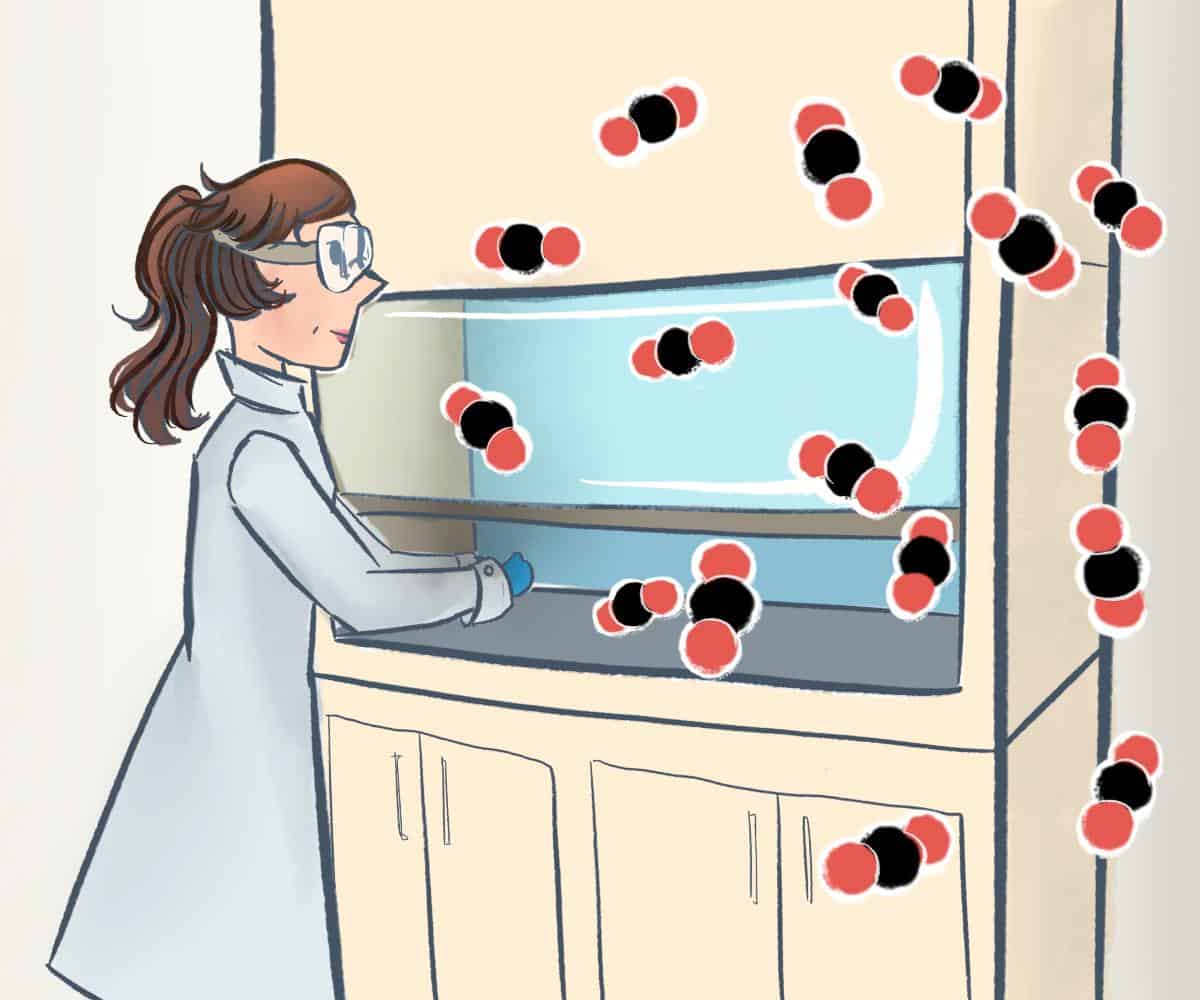The role of greenhouse gases in climate change is often misunderstood by the public. Most people know that climate change is caused by increased emissions of greenhouse gases. However, many don’t understand how — for example — carbon dioxide traps heat in the atmosphere.
U of T chemistry professors Jessica D’eon, Jennifer Faust, Kristine Quinlan, and Scott Browning are acutely aware of this knowledge gap and have developed a lab to address it. Their findings were published in the Journal of Chemical Education.
The researchers designed a first-year chemistry laboratory on the greenhouse effect that provides a topical and engaging introduction to the undergraduate student laboratory.
The relatively simple experimental design allows students to focus on grasping complex, big picture concepts without feeling anxious about measurements or dangerous chemicals.
Despite climate science being taught in primary and secondary schools, researchers from Purdue University found that most students enter post-secondary education with a fragmented understanding of the climate system.
D’eon agrees with the findings of this study, writing that many of her students have “put [the mental model] together in a way that is not scientifically sound” and that generally “the greenhouse gas effect has been identified as a poorly understood concept in climate science.”
Now, these tangible experiments are giving students the ‘aha’ moment that they rarely experience when untangling complex and abstract concepts. As students move on from this course to pursue careers in science and non-science disciplines, they will do so with a fundamental understanding of greenhouse gases.
In the first experiment, students are asked to recognize phase changes using dry ice — solid carbon dioxide. Here, they develop a sense of scale while improving their qualitative observation skills.
In the second experiment, students compare types of radiation and energy, discussing their relative importance for the greenhouse effect.
They then apply this knowledge by comparing the heating rates of two ‘beaker Earths’ — one containing a normal atmosphere and another enriched with carbon dioxide. The students observe firsthand the faster rate of warming in the latter beaker, which they can relate back to their studies.
Reflections before and after the experiments indicate that, upon completing this lab, 87 per cent of students significantly improved their mechanistic understanding of the greenhouse effect.
Prior to the experiments, most students gave an unscientific description of greenhouse gases or were too vague in their explanations. After the experiments, students gave more detailed, scientific responses.
Improving students’ fundamental understanding of greenhouse gases contributes to a better-informed future generation of voters who will make critical decisions about how our society tackles climate change.


